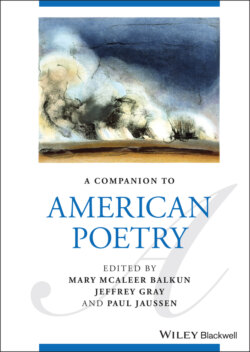Читать книгу A Companion to American Poetry - Группа авторов - Страница 46
NOTES
Оглавление1 1. Abrams describes the meditative climax upon which the “out-in-out” structure of the “greater Romantic lyric” hinges as the moment in which “the lyric speaker achieves an insight, faces up to a tragic loss, comes to a moral decision, or resolves an emotional problem,” delivering him back to the scene with “an altered mood and deepened understanding” (Abrams 1965, p. 528). Culler, taxonomizing the “Poetics of the Lyric” in Structuralist Poetics (1976), presents the epiphanic as an outcome of the transhistorical hyperbolic conventions of the genre; see pp. 175–178.
2 2. Hong points out that despite the avant-garde’s rhetorical equation of radical form with progressive politics, “Avant-garde poetry’s attitudes towards race have been no different than that of mainstream institutions”.
3 3. Cf. Skillman (2019), pp. 426–435.
